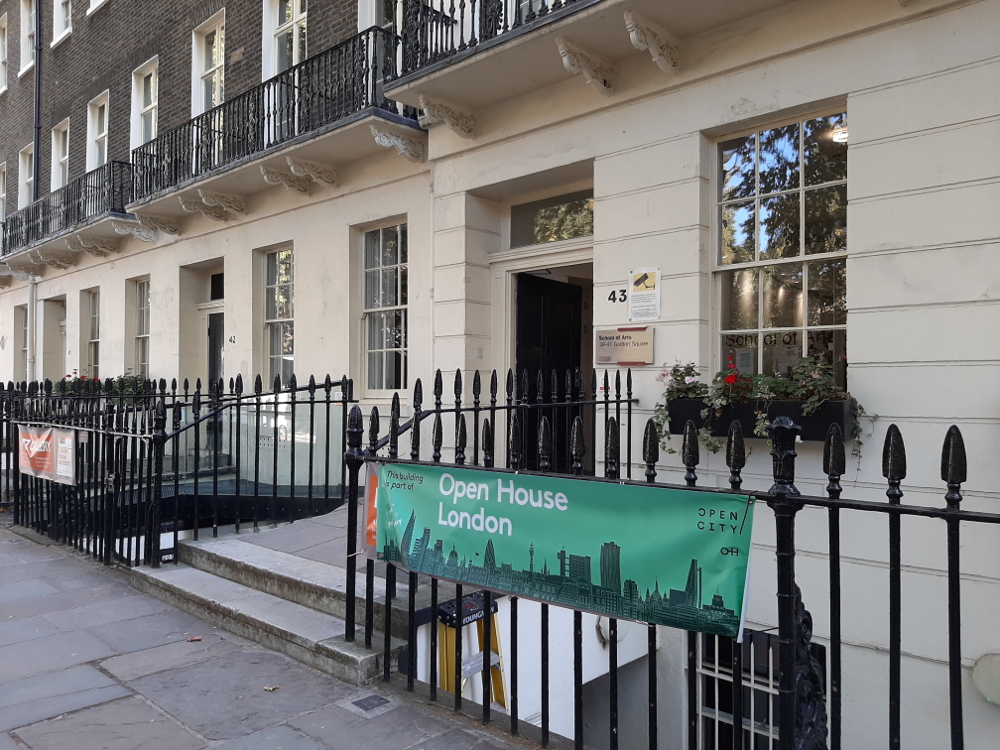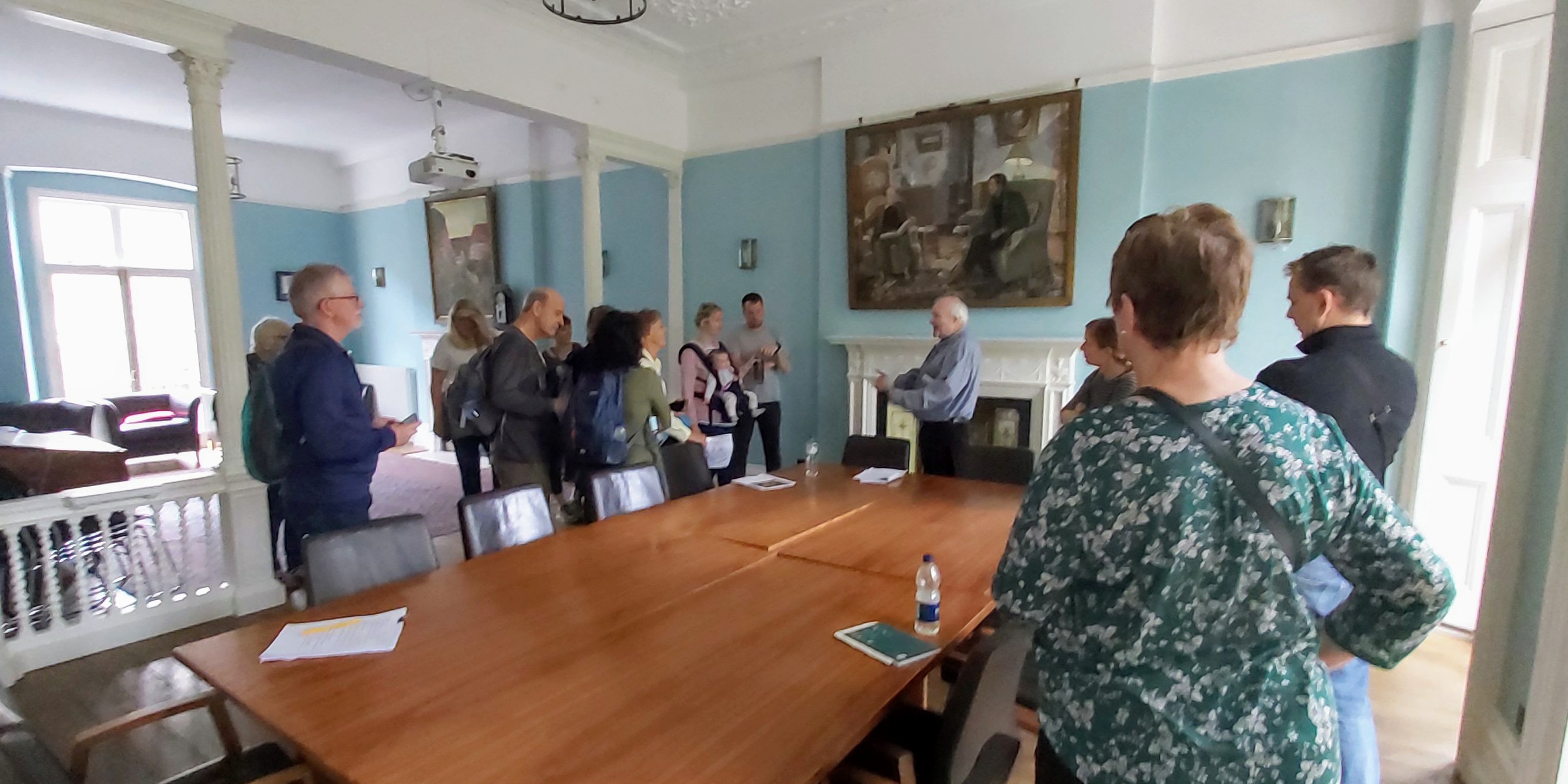Welcome to the new academic year! Brilliant to see all the new faces at the inductions, and familiar faces as well in the classroom this week.
We’re delighted to welcome Dr Clare Vernon as Lecturer in History of Art before 1700, replacing Zoe Opacic, who is on leave this year. Clare is an expert on the medieval art and architecture of Southern Italy, and she will be teaching on both the BA and MA programmes. In addition to Zoe, three other colleagues are on research leave during the academic year 2019-20: Suzannah Biernoff, Annie Coombes and Lynda Nead.
A crucial date for your diary: Friday 1 November 6pm. That evening we welcome a renowned art historian whose books many of you will have had the pleasure of reading. T.J.Clark will be giving the Peter Murray Memorial Lecture on the topic of ‘What Cezanne Saw in Pissarro’. Professor Clark, an enormously engaging speaker, will be asking new questions about these familiar artists. Here’s the blurb: ‘After four or five years of aggressive and original achievement as a painter, Cezanne apprenticed himself to Pissarro in the 1870s, working side by side with the master. Why? What did he see in Pissarro that he thought essential to understand? What couldn’t he emulate? In what ways does the difference between the two artists matter to the art we call ‘modern’?’ The Murray Lecture is held every other year in memory of Peter Murray, the founder of Birkbeck’s History of Art Department, and is generously supported by the Murray Bequest. We’ll be in the Clore Lecture Theatre and there’ll be a wine reception following the lecture. Please join us, and remember to book your tickets here. The Murray lecture often sells out, so don’t forget to book.
Here’s a photo of Cezanne and Pissarro meeting – I think they’re the ones holding their hats.
As usual the term features a rich panoply of events to attend:
The Centre for Museum Cultures has three talks scheduled this term. Thomas Ardill, Curator of Paintings, Prints and Drawings at the Museum of London will unpack the process of curating the Secret Rivers exhibition there, 21 October 6pm in Keynes Library. Our own Kasia Murawska-Muthesius will speak on 11 November 6pm in Keynes about a project she has both written about and been personally engaged in, the Critical Museum initiative, led by the late Piotr Piotrowski, which shook up the museum world in Warsaw and beyond by imagining a museum that would use its own resources, including its collection, its range of activities and its “auratic” space, for encouraging and hosting the debates on the issues – including many controversial ones – crucial for contemporary societies. Their last event of the term, on 13 December, 5pm, takes place in the V&A – Jacques Schuhmacher, the V&A’s Provenance Curator, will provide a behind-the-scenes tour of the exhibition ‘Concealed Histories, Uncovering the Story of Nazi Looting’ (places for this are very limited, and booking will open closer to the time.) Booking links for the other two events are here.
The Murray Seminars have been announced and the first one is coming up on 16 October, with Petr Uličný on The Origins of Renaissance Architecture in Bohemia. Seminars take place at 5pm in the Keynes Library (Room 114), unless stated otherwise. Talks finish by 5.50pm to allow those with other commitments to leave, and are then followed by discussion and refreshments. These talks are, like the Murray Lecture, supported by the Murray Bequest in memory of the Department’s founder Peter Murray, and are open to all. No booking required. More on the upcoming programme here.
The Architecture Space and Society Centre has two symposia coming up that on the face of it present a stark contrast, but in fact share the goal of taking a building type as the starting point for a wider cultural, artistic and architectural analysis. Factory World: Architecture and Industrialization over Time and Space, on 31 October, explores new research on factory architecture and images of factories between the Industrial Revolution and the present day, and across several different countries. And on 12 December, we’ll have three speakers from the UK and US addressing the complexities and afterlives of The English Country House, in an event co-organised with the Birkbeck Eighteenth-Century Research Group.
The ASSC is also hosting not one but two visiting scholars this year, both from outside of the UK. Anne-Françoise Morel joins us from KU Leuven in Belgium, taking up the Belgian Chair at the University of London. Claire Zimmerman comes from the University of Michigan as a Birkbeck Institute for the Humanities visiting scholar. You can find out more about them and their planned activities here.
We had a very successful weekend opening the School of Arts Building on Gordon Square for Open House London on 21-22 September, with 371 visitors being guided through the building by a brilliant (and often hilarious) group of History of Art students, current and past. The result was many enlightened and delighted visitors. Some comments: ‘Brilliant! I had no idea there was that much history and that many stories behind these doors!’; ‘The tour really knitted together the history of the building, the lives of those who lived here and the modern development and use of the building. It was awesome to tread in the spaces which Keynes trod.’ ‘So many different stories! Film Studies to Bloomsbury ballerina!’; ‘A wonderful tour – I never knew how many different things were hiding inside this building! Thanks to the guide for bringing everything to life.’ And for readers of French: ‘Magnifique batiment, rempli d’histoire et de fantomes inspirants.’ Finally, a word from one of our tour guides, Lisa Thefaut (MA History of Art): ‘it was brilliant to get such a positive response from the visitors on the tours. Everyone seemed to love time travelling to moments in the history of Gordon Square and finding out about the cultural significance of this diverse space from the 19th century to the present day.’
On the topic of the School of Arts building… you’ll have noticed it’s looking a bit rough around the edges. From around April 2020, it’ll be undergoing a major renovation, though we’ll carry on using it during that time, with a third of the building being closed for use at a time and those of us with offices in those parts of the building moving in to share with colleagues during the construction. More communications on the elements of this that might affect students as we get closer to April.




